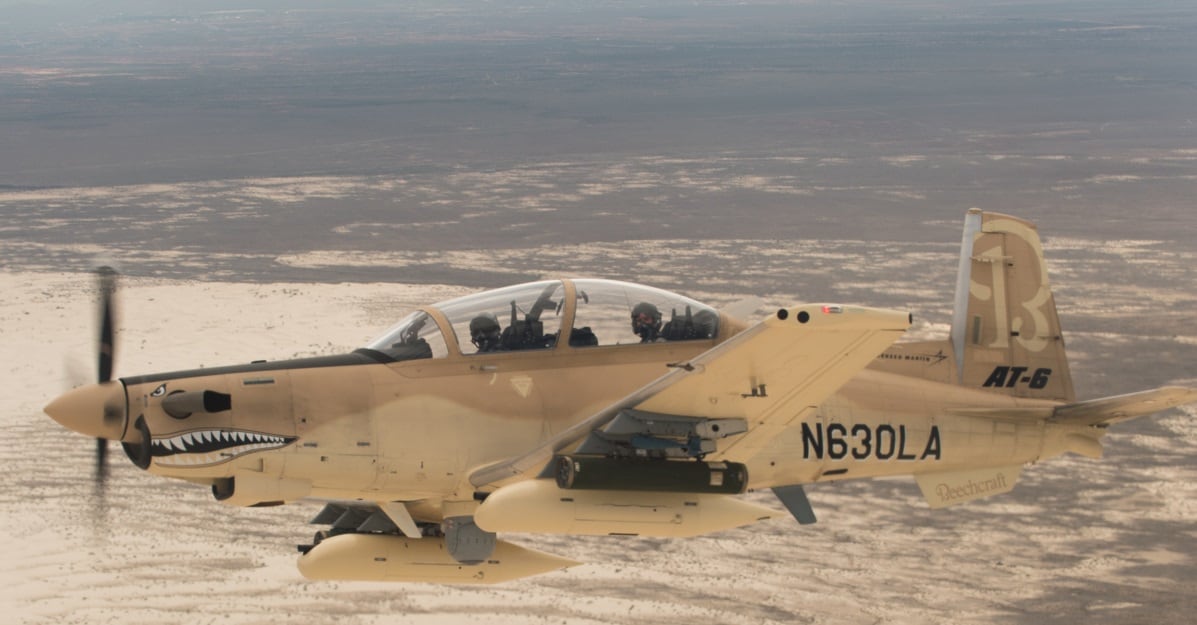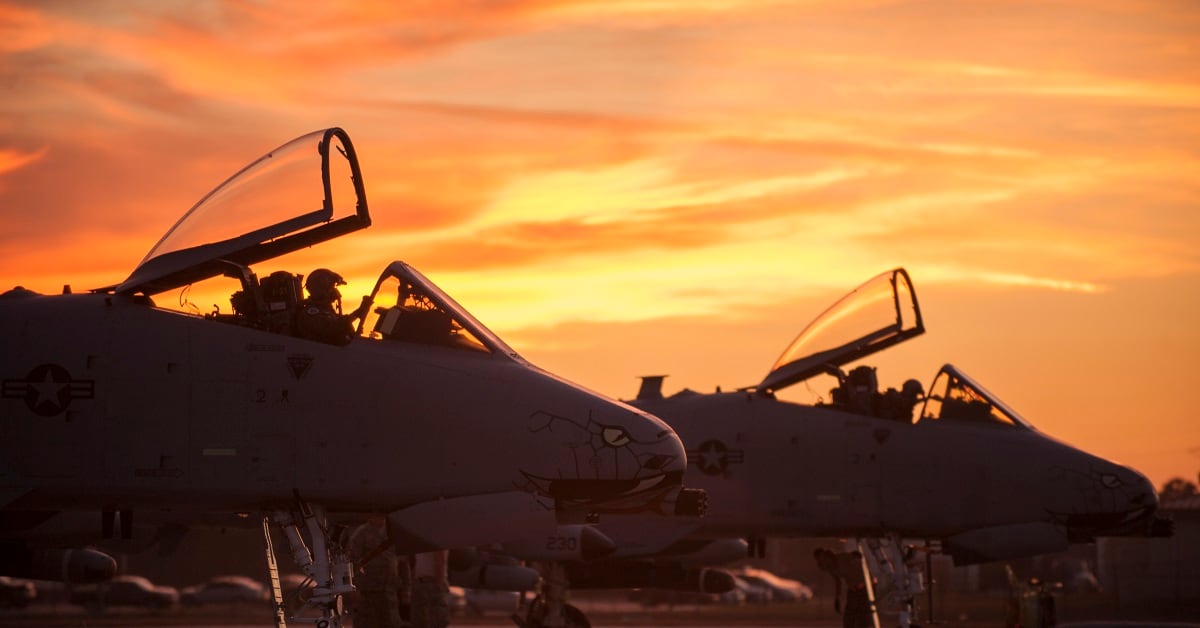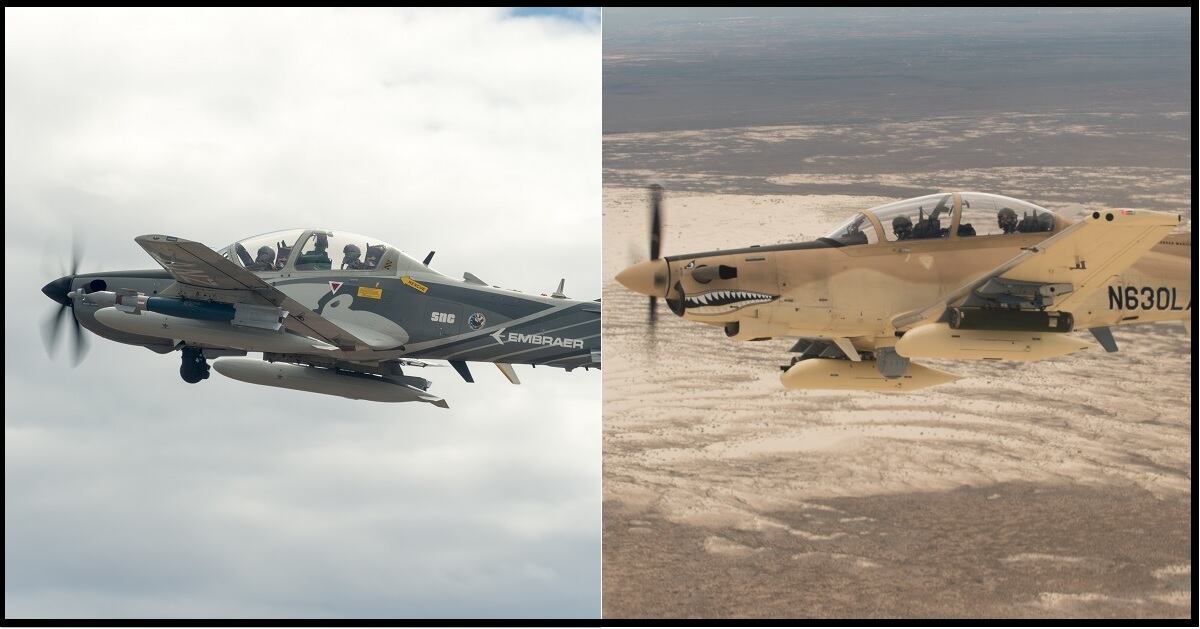The United States military needs to procure a light attack aircraft, and it needs to do so quickly.
The U.S. Air Force recently ended a series of experiments using two different existing light-attack aircraft. Light attack aircraft can strike hostile targets when the enemy does not possess a significant anti-aircraft capability. The current conflicts in Iraq/Syria and Afghanistan are examples of such conflicts. Thanks to this “fly off,” the Air Force surely has a good idea what these airplanes can do and can ask the manufacturers of these planes to submit proposals.
We need the U.S. military to end the current practice of using our high-capability, high-cost, front line jet fighters to conduct operations when their capabilities far exceed those required for the missions. To facilitate the acquisition of this low-cost aircraft, I put language in the ‘National Defense Authorization Act’ pressing the Air Force to pursue the fielding of a light attack aircraft.

Flying an F-22 fighter, which cost about $339 million each, to drop a bomb on an undefended poppy processing facility in Afghanistan is comparable to driving a Formula 1 race car to the corner grocery store to pick up a gallon of milk. In contrast, light attack aircraft, which cost about $12 million per aircraft, will provide the combat capabilities needed for low-threat missions.
And yes, this event really happened! Last November in Afghanistan, an F-22 was used to strike a Taliban drug lab. Estimates of the cost per hour to fly an F-22 range as high as $70,000, while a light attack aircraft costs about $2,000 per flight hour.
RELATED

The costs of buying and operating fifth-generation fighters are acceptable when we need their extraordinary capability to combat near-peer competitors, but we owe it to our taxpayers to find less-costly solutions against less-capable threats where and when we can.
Earlier this year, I spoke with Secretary of Defense James Mattis during a House Armed Services Committee hearing. Secretary Mattis acknowledged the potential value of a light attack aircraft.
"We are looking for affordability and, where we don’t need an aircraft that costs 17, 20, 70 thousand dollars per flight hour, we need to look at it as a way to deliver readiness and combat capability on an affordable basis,” Secretary Mattis said.

In addition to the aircrafts' more economical capabilities, several friendly developing nations have also expressed an interest in procuring a light attack aircraft. This would increase manufacturing jobs here in the U.S. An increase in production would lower the cost per aircraft for the U.S., and allow our light attack pilots to train and fly with these nation’s air forces — which will improve our military-to-military relationship with them.
Finally, I should note a few of the key characteristics that I, as a Marine Corps combat veteran, think are the most important ones this aircraft should possess. To my mind, these include the ability to accurately deliver a range of “smart” and traditional rockets and bombs, along with a rugged air-frame that can survive against small-arms fire, and the ability to repeatedly and reliably operate from unimproved airfields and austere locations around the world.
RELATED

The ability to operate in the roughest environments is of concern to me because today, and in the future, we must presume that our military will continue to deploy in areas far from improved infrastructure and with limited services. Paved runways with existing infrastructure aren’t always available, but unimproved landing strips are.
I will continue to press the Air Force to expedite the acquisition of light attack aircraft and will also urge the Air Force to select an aircraft that will meet not only its needs, but those of our Special Operations Command. Other services, the Marines in particular, may also want to procure it, creating additional production cost savings.
It’s time to engage the threats of the 21st century using the right platform to get the job done —without breaking the taxpayers’ wallets.
Rep. Mike Coffman represents the 6th Congressional District of Colorado in the U.S. House of Representatives. As a Marine combat veteran, he is the only member of Congress to have served in both Iraq wars. He currently serves on the House Veterans Affairs Committee as well as the House Armed Services Committee where he is the chairman of the military personnel subcommittee.
The opinions expressed here do not necessarily reflect the views of Military Times or its staff.





